Farmers can increase their income by doing fish farming business. Farmed fish provide high-quality protein for human consumption. Fish farming is gradually becoming the most profitable business for livestock farmers across the state. The state governments are implementing several programs to improve the welfare of farmers and double their income. As a result, fish farming is emerging as the fastest-growing sector for animal feed production. Let’s check out more information about fish farming loans in India.
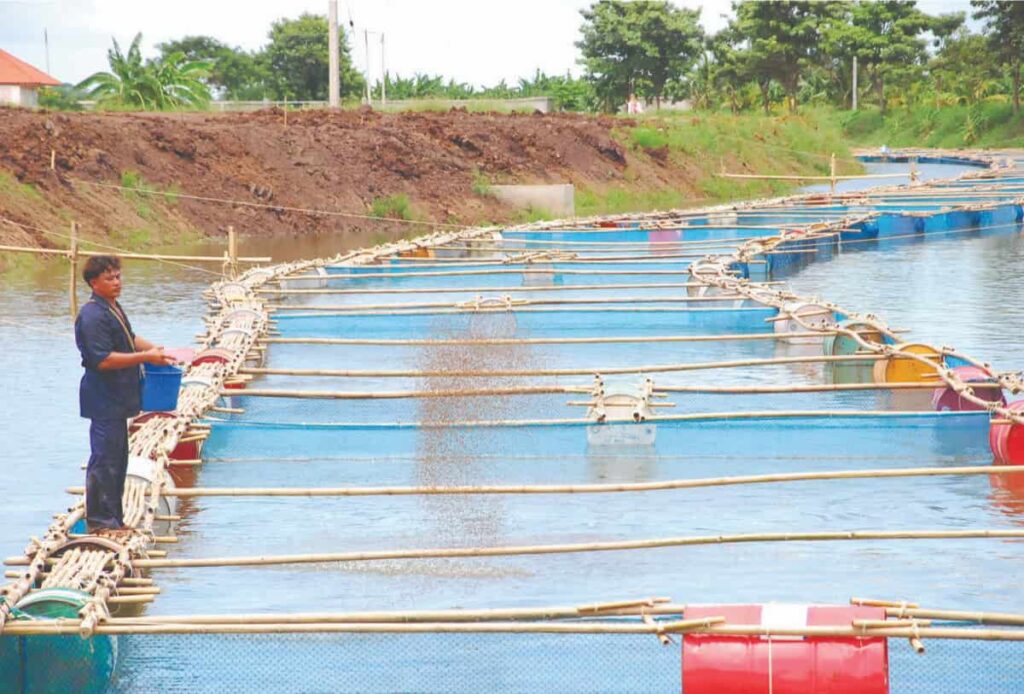
The National Bank of Agriculture and Rural Development is a government that sets up a financial institution to support and promote rural development and sustainable agriculture in the country. The best part is that the government provides a loan of Rs 3 lakh at an affordable interest rate. Not only this, but the government also provides insurance for fish farming. According to sources, loans are provided under various loans by the central and state governments to promote fish farming.
The central government is lending 75% of the total cost of fish. Additionally, fishing can be done in both still and flowing water. If fish raising is done in moving water, it is called an ‘aquaculture system.’ Similarly, fish farming can be done on the banks of mountain waterfalls. Besides, fish farming is done in the stagnant water of the plains.
In most government-supported subsidized loan schemes, a bank loan is mandatory to avail of the subsidy. Therefore, promoters should be careful while deciding on financing sources. Bank loans covering about 75% to 90% of the total cost for development will be available from financial institutions. For these types of models, bank loans cover about 75%.
Fish farming loan in India
Who can benefit from PM Matsya Sampada Yojana?
PM Matsya Sampada Yojana benefits fish farmers, fish sellers, farmer producer organizations, cooperatives, entrepreneurs and private firms, self-help groups, fisheries associations, fisheries development corporations, etc. People working in this field can avail this opportunity. Under the Kisan Credit Card Scheme, these people can get instant loans for fish farming.
In case you missed it: A Guide to Understand RAS Fish Farming: Check How This Helps Beginners
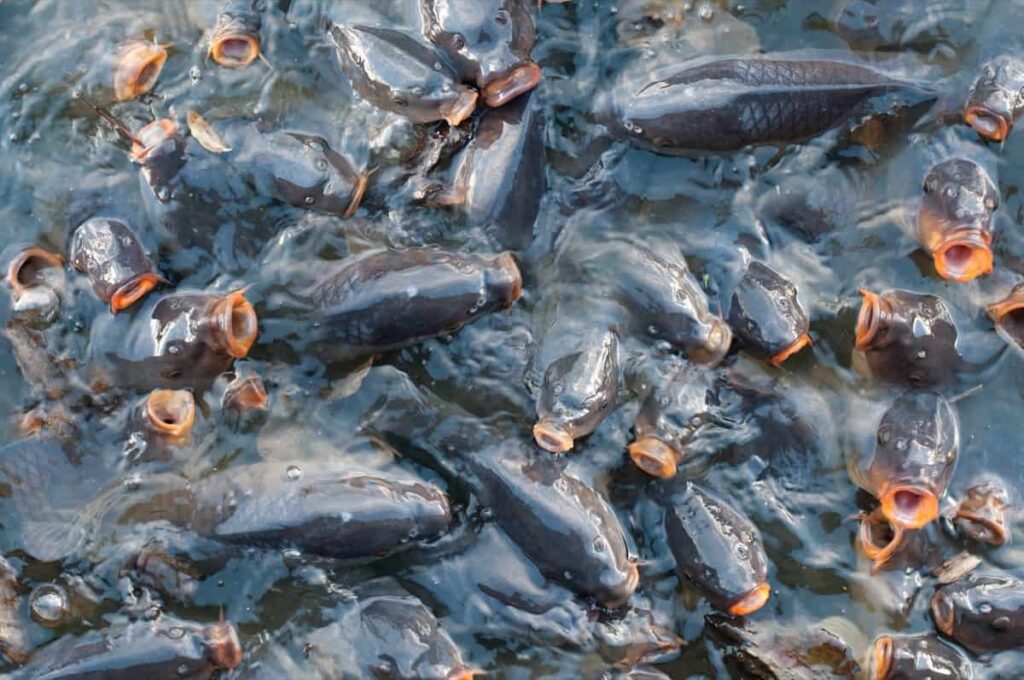
Documents required for fish farming business
- Identity proof- Voter ID card /Passport / PAN card / Aadhaar card / Driving License etc
- Address proof: Voter ID card / Aadhaar card / Driving license etc
- The Aadhar Card of the applicant
- Residence Certificate of the applicant
- The mobile number is linked with the Aadhar Card
- Copy of Bank Passbook for Bank Account Details
- Caste Certificate of the applicant
Mudra Loan for fish farming
Mudra Loan is a government that Launched a credit funding loan for offering business loans and MSME loans of up to Rs. 10 lakhs to individuals, business owners, enterprises, and self-employed persons. This scheme requires no security from borrowers through banks/NBFCs. The repayment period is from NIL to 5 years with nominal processing fees and foreclosure charges.
Eligible entities – Loans under the Mudra Scheme can be availed only by the following enterprises engaged in services, manufacturing, and trading sectors:
- Individuals, Self-Employed Professionals, and Start-ups
- Micro, Small, and Medium Enterprises (MSMEs)
- Shopkeepers, street vendors How to Apply for Shopkeepers, Retailers, Traders, Small Industrialists, and Artisans
- Sole Proprietorships, Partnership Firms, Limited Liability Partnerships (LLPs), and Other Business Entities
How to apply for a fish farming loan?
The application form is available at mudra.org.in, so You can download the form and fill in all the required details. However, application procedures may be slightly different in different banks. Therefore, you should visit the nearest branch of the desired bank from where you wish to avail Mudra Loan, submit the duly filled application form, and complete the bank formalities.
Secondly, you can also apply online by submitting the duly filled application form along with the documents specified by the lender on the bank’s official website. Once the lender is satisfied with the submitted documents, they will approve the loan, and you can get the loan amount in your mentioned bank account within 7-10 working days. Therefore, choose the best loan product available at the lowest interest rate per your business needs.
If you want to do fish farming with the ‘Commercial Aquaculture System,’ this project will cost you around Rs.20 Lakhs. In this case, you will need to come up with Rs.5 lakh. The remaining 15 lakh rupees will be provided as financial assistance. This loan will also include a subsidy for you. Firstly, you must create a project and submit it to the District Fisheries Department.
In case you missed it: A Guide to Understand Biofloc Fish Farming: Check How this Guide Helps Fish Farmers
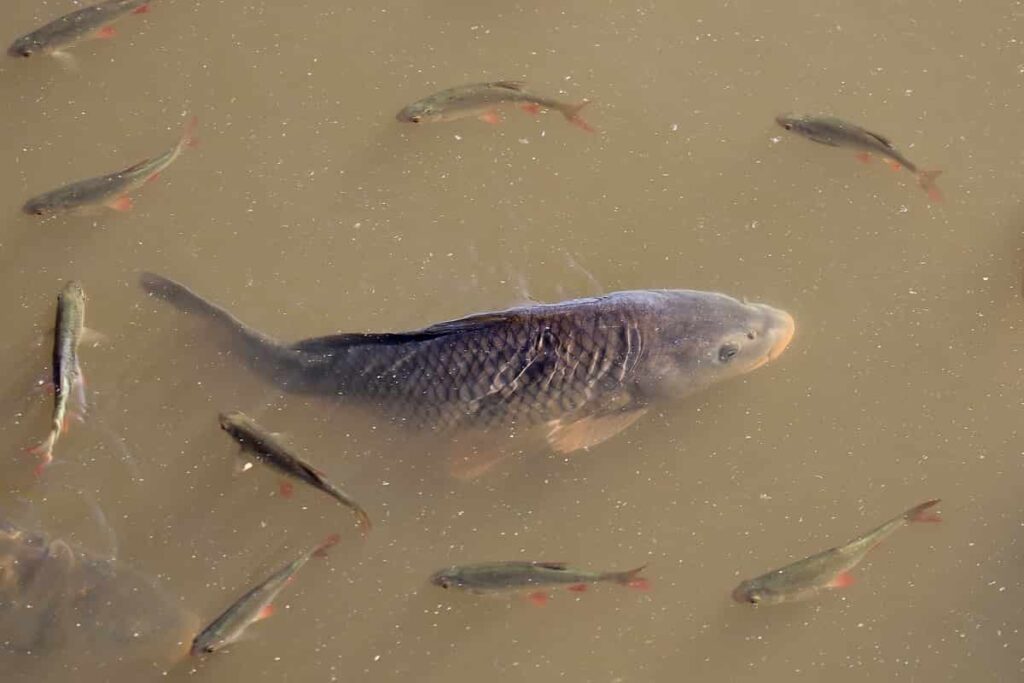
Rules for medium-term fisheries loans
Pisciculture means fisheries development, both inland and marine, fishing and all activities related or incidental to it. Fish rearing or culture and fishing are collectively called fisheries. Fish can grow and be raised in seawater (ocean), freshwater (inland/freshwater), and brackish water (confluence of seawater and river).
Eligibility
Fishermen’s Cooperative Societies, PACS, PACS, or Fishermen’s Cooperative Societies Members of, own, or lease inland water bodies are eligible for finance. Specified special ponds/banks/lakes up to 5 hectares (Government-owned water bodies) through Gram Panchayats/Panchayat Committees to Fish Farmers/Fishermen’s Cooperative Societies are being leased for a period of 3 to 5 years.
Purpose
In the case of inland fisheries, finance can be provided for the following purposes: A term loan for excavation/improvement/rehabilitation of ponds/reservoirs and a short-term loan for working capital for fish rearing.
Margin
the borrower will generate 30% (thirty percent) of the project cost. A member society has to purchase the required “C” class share for a loan.
Security
- Legal / Equitable mortgage of the land/water body to be financed and, if the same is leasehold, mortgage of the alternative landed property of at least equal value.
- Liquid collateral security at 10% of sanctioned loan amount and Hypothecation of input and produced fish stocks
- The bank decides the rate of interest from time to time
Repayment period
Term loans for pond excavation can be repaid in half initial/annual installments over 3-5 years) with a grace period of 11 months from the date of the release. Repayment period working capital advance is repayable within one year in case of renovation/renovation.
Documents required
- Land records like sale deeds, mutation certificates, tax receipts, etc., and search-con-non-incumbency certificates in respect of occupied land and
- Project Economics, Civil Construction Estimates, and a technically tested scheme. (if any).
NABARD loan for fish farming
The main activities and functions undertaken under NABARD include:
- Providing financing and refinancing support for the improvement of rural infrastructure
- Preparation of district-level credit plan and management of rural banks and cooperative banks
- Provides funds for developing food parks and food processing units for some food parks. Apart from this, it also provides its services in warehousing, cold chain, and storage infrastructure
- Assists marketing federations by offering credit facilities and also provides special long-term irrigation and infrastructure development funds for rural India
- To develop good banking practices for the underprivileged sections of India and provide training to the country’s handicraft artisans and also help in marketing the products
- NABARD developed the SHG Bank Linkage project, and it is considered one of the most notable microfinance projects internationally
- NABARD has financed about one-fifth of India’s rural population and infrastructure. NABARD also develops Kisan Credit Card
Loans provided by NABARD for fish farming
The loan is provided for several works like the development of a pond, new construction of the pond, information for the first year, etc., which state governments implement under the central sponsor subsidy scheme by FFDA (Fish Farmers Development Agency). Eligible borrowers for availing credit include individuals, Companies, Partnership firms, Cooperative Societies, Fish Farmers Groups, and Producer Companies or organizations.
Interest Rate: Interest rate offered by banks or RBI or NABARD. It changes with time. The bank depends on the loan amount and the loan granting agency. All banks are free to decide their interest rates per the guidelines issued by the RBI.
Rate of refinancing
NABARD can be availed for setting up cold storage facilities, considering its feasibility and financial viability. Refinancing is available for availing as per existing norms and norms. In addition, NABARD offers refinance assistance to cooperatives and commercial and rural banks for fish farming. The refinancing rate is not fixed and changes from time to time.
In case you missed it: How to Start Fish Farming from Scratch: Check How this Guide Helps Beginners
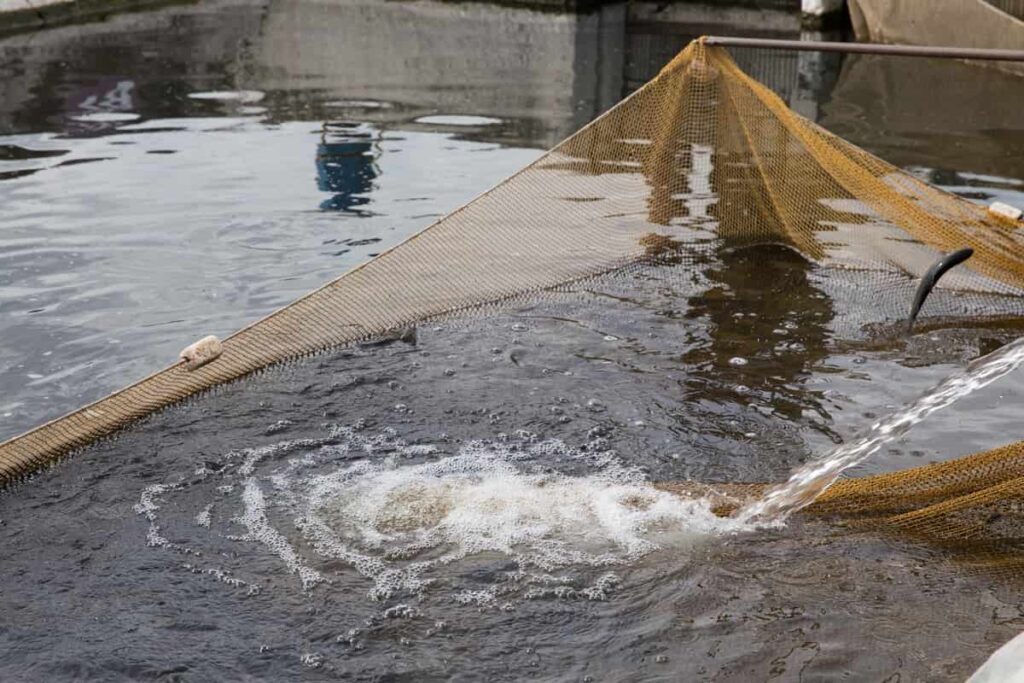
A fish farming loan from the Central Bank of India
Objectives
- Creation and modernization of capture and culture fisheries infrastructure
- Creation and modernization of inland fisheries infrastructure
- Creation and modernization of inland fisheries infrastructure
- Reduce post-harvest losses and provide domestic marketing facilities through infrastructural support
Support
To bridge resource gaps and facilitate the completion of ongoing infrastructure projects
Eligible entities
- State Governments/Union Territories
- State-owned corporations/ State Govt Undertakings
- Fisheries Co-operative Federations
- Cooperatives, collective groups of fish farmers & fish produce groups
- Panchayat Raj Institutions/SHGs/NGOs
- SCs/STs/Marginal Farmers, women enterprenuers, SHGs & Cooperatives
- Private Companies/Entrepreneurs
- Any other institution or entity decided by the Govt
Margin – Minimum 20%
Security
- Primary-Hypothecation of assets created out of the bank’s finance
- No collateral for a limit of Rs. 2.00 Crore since the advance will be covered under CGTMSE
- For advances above Rs. 2.00 Crore and at least 150% of the amount financed by the bank
Processing charges
- Up to Rs. 3 Lakh-: Nil
- Above Rs. 3 Lakh: @0.30 %
Upfront fee
- Up to Rs. 3 Lakh: Nil
- Above Rs. 3 Lakh: 50% of 1.25%
Composite fish farming loans
Composite fish farming is a process in which more than one species of fish are reared in harmony simultaneously to achieve maximum production by using the available land and water as much as possible. Loans are given for:
- Construction of fishponds by conversion of cultivable land or under-cultivated land with low yield.
- Development of wetlands and other areas for fish farming.
- Deepening / widening and decommissioning of existing ponds.
- Purchase of nets and other accessories.
- Working capital expenditure for procurement of fingerlings (juveniles), fertilizer, feed, and labor inputs.
- Establishment of nurseries for raising fingerlings.
State Bank of India loan for fish farming
This loan is for purchasing fish seeds, fishing nets, and other supplies. Apart from these loans, SBI also offers various other schemes for the benefit of farmers, such as marketing produce loans, assistance for setting up agricultural clinics and agribusinesses, land purchase scheme, SBI Krishak Athan Yojana, borrowers’ loan modification scheme, and many more. To check your eligibility for these loans, visit the nearest SBI branch for more details.
Features
- Facility type: Agricultural Term Loan
- Margin: 15% to 25% of project cost
- Interest rate: The interest rate is linked to a one-year MCLR rate + spread. The bank determines the spread from time to time. Currently, the interest rate is 10.75% p.a.
- Repayment: 3-5 years, depending on activity/income generation, including gestation period.
- Loan limit: Maximum Rs.10 Lakhs
- Purpose of loan: Self-employment and Livelihood Generation
- Security: Primary: Hypothecation of bank loan assets and other movable assets / Collateral: No collateral security will be obtained for all loans up to Rs.10 Lakhs
- Processing charges: Up to Rs.50,000 – NIL / Rs.50,000 to Rs.10 Lakh 0.50% of Loan Amount
SBI Fisheries Loans for Farmers for Integrated Fish Farming, Fish Seeds, Fish Nets, Construction of New Ponds, and Renovation/Construction of Ponds and Tanks involve generating additional income by providing loans to purchase freshwater farms, fish hatcheries, and other equipment.
In case you missed it: How to Build a Fish Pond for Beginners: For Backyard, Outdoors, Start with Best and Cheap Ideas
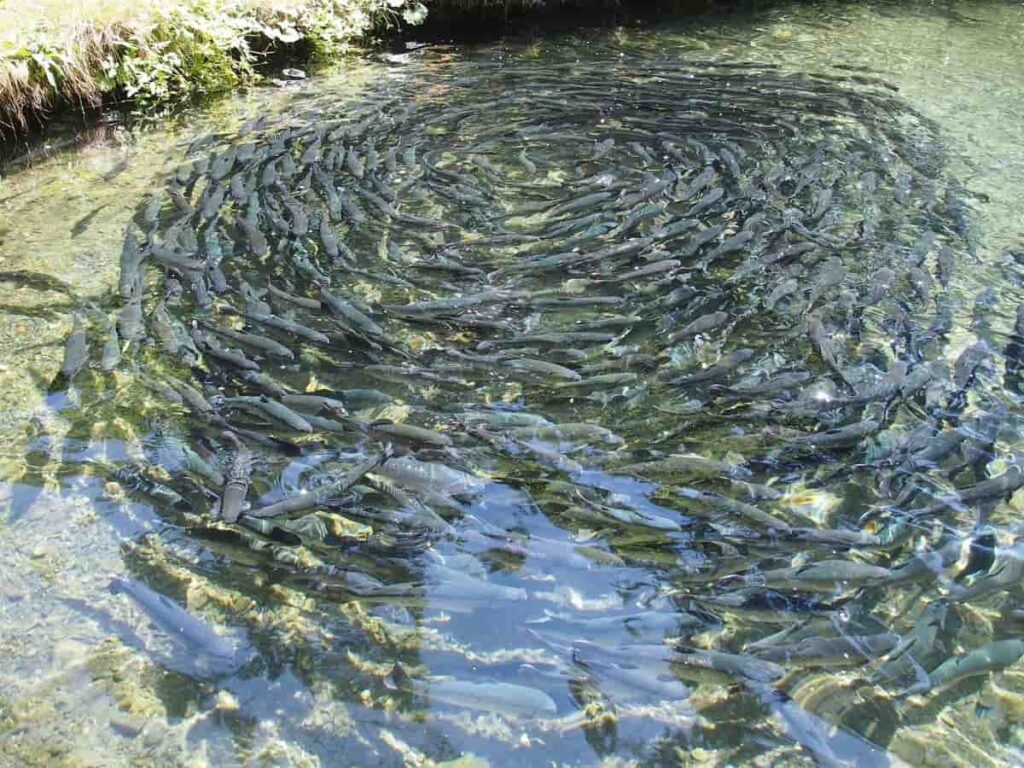
Eligibility for SBI Fisheries Loan
- Professional Fishermen
- Farmers engaged in fish farming
The margin for SBI Fisheries Loan
15-25% of the project cost
A fish farming loan from the Union Bank of India
Purpose
For fish culture, boat loan, construction/deepening/widening/desalting of ponds, purchasing fingerlings, equipment, fertilizer, feed, labor input, etc.
Eligibility
- Individual, Company, Partnership Firm, Cooperative Society, Fish Farmers Group -SHG/JLG.
- The farming loan will be sanctioned depending on the area of cultivation.
Margin
- Up to Rs.1.60 Lakh – None
- Above Rs.1.60 Lakh – Minimum 10%
- Loan amount: Subject to the economic viability of the project based on NABARD unit cost.
- Repayment schedule – Maximum 7 years, including a grace period of maximum of 6 months.
Security
- Loans up to Rs 1.60 lakh
- Hypothecation of assets arising from bank finance
- Mortgage of land (Accepted value of land should not be less than 100% of the loan amount) &/ or third-party guarantee (means should not be less than 100% of the loan amount)
- For loans above Rs. 1,00,000: Hypothecation of crops/assets created out of finance; Mortgage of landed properties
Canara Bank Fisheries Loan
Canara Bank categorizes fisheries loan customers mainly in 3 types under the Marine Fisheries segment: Finance for Fishing Boats, Finance for Deep Sea fishing vessels, and Finance for Inland Fisheries.
Canara bank loan for fishing boats
It can be used for nets, and other fishing gear and equipment:
- Purchase/construction of mechanized boats
- Mechanization of country boats with in-house/outboard engines
- Non-Mechanized Boats
- Nets and fishing equipment
Eligibility
- The applicant should be an experienced/ professional fisherman.
- The applicant should be able to manage the craft and have a trained crew to operate the craft/vessel. In addition, skilled staff members should be available in the area.
- The applicant should be a resident, and the applicant’s place of residence should be within 16 km of the branch. Coastal areas should have good potential fishing grounds in the command area, and fish species with good demand (domestic / export) should be available in large quantities.
- There should be adequate port facilities for the landing, berthing, and sheltering boats.
- The area must be well served by rail and road networks to facilitate quick transportation to the fishery processing/marketing centers. Adequate servicing and repair facilities should be available for the craft. In addition, there should be adequate cold storage/processing/freezing/canning facilities.
- Refrigerated and insulated transport vehicles should be available for marketing.
- The party should preferably be a member of the Fish Marketing Federation, which assists fishermen in marketing the catch and remits the sale proceeds to the bank.
Margin money
- For loans up to Rs.1,00,000: No Margin.
- For loans above Rs.1,00,000: 15% to 25% of the project cost, depending on the purpose and amount of the loan
In case you missed it: 22 Key Rules for Effective Fish Farm Management: From Planning to Reducing Production Cost
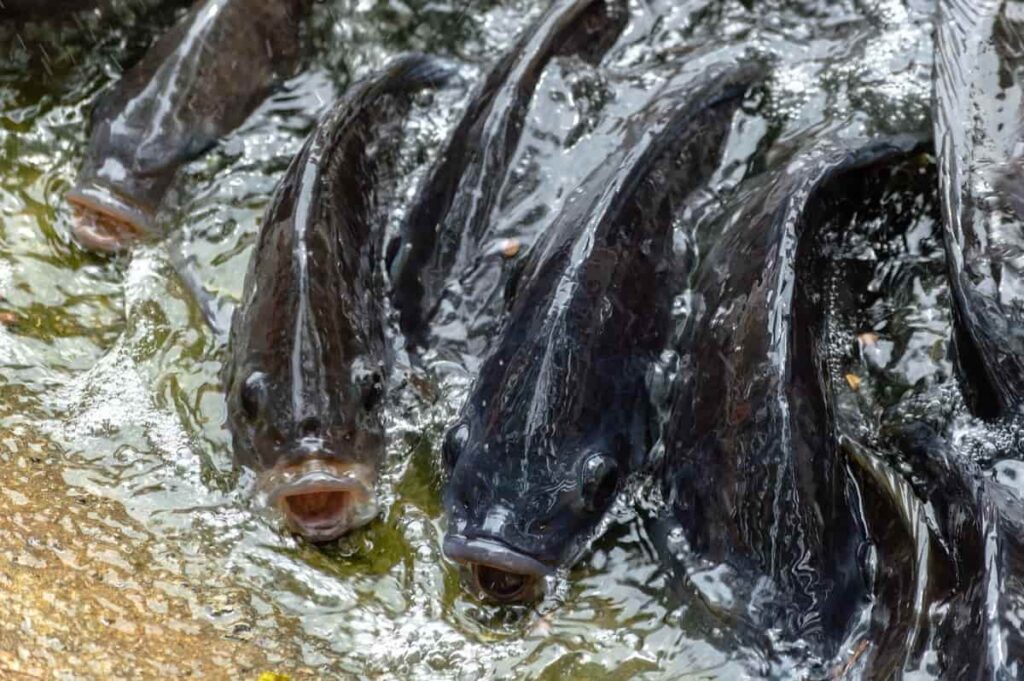
Repayment period
The loan is repayable in 4-7 years for non-mechanized boats and 8-12 years for mechanized boats in monthly installments spread over the fishing season. Paid leave may be allowed up to 4 months a year during the off-season (monsoon season).
Canara Bank Fisheries Loans for Inland Fisheries
Canara Bank Fisheries Loans are sanctioned for fish farming in all its aspects, like construction of ponds / deep/wide desalination, purchase of fingerlings, equipment, fertilizers, feed, and labor inputs.
Eligibility
- Applicant should be an experienced/professional fisherman/trained entrepreneur.
- Applicant should own/lease land/water tank/marsh saltwater areas.
- Technical guidance should be available from the Fisheries Department.
- Fingerlings should be easily accessible.
- The area should be well served by rail/road to transport fish catches to processing/marketing centers.
- There should be adequate cold storage/processing/freezing/canning facilities.
- Refrigerated and insulated transport vehicles should be available for marketing the product.
Security
- For loans up to Rs. 1,00,000: Hypothecation of crops/assets created out of finance.
- For loans above Rs.1,00,000: Hypothecation of crops/assets created out of finance; Mortgage of landed properties.
For loans granted for the construction/deepening of tanks, security principles are specified in the Form Development Loans of this manual. In the case of composite loans, for example, pond + fish rearing construction, if the share of the development loan is more than Rs. 100,000, a mortgage of landed property is required.
Conclusion
Fish farming can be integrated into an existing farm to generate additional income and improve water management. Farmers can select fish species with desirable characteristics for rearing. Loans greatly help meet working capital requirements and expand the fish farming business.
- Types of Pesticides Used in Agriculture: A Beginner’s Guide
- Economical Aquaculture: A Guide to Low-Budget Fish Farming
- 15 Common Planting Errors That Can Doom Your Fruit Trees
- How to Make Houseplants Bushy: Effective Tips and Ideas
- Innovative Strategies for Boosting Coconut Pollination and Yield
- Pollination Strategies for Maximum Pumpkin Yield
- The Complete Guide to Chicken Fattening: Strategies for Maximum Growth
- Natural Solutions for Tulip Problems: 100% Effective Remedies for Leaf and Bulb-Related Issues
- Revolutionizing Citrus Preservation: Towards a Healthier, Greener Future
- Natural Solutions for Peony Leaf and Flower Problems: 100% Effective Remedies
- Maximizing Profits with Avocado Contract Farming in India: A Comprehensive Guide
- Natural Solutions for Hydrangea Problems: 100% Effective Remedies for Leaf and Flowers
- The Ultimate Guide to Choosing the Perfect Foliage Friend: Bringing Life Indoors
- From Sunlight to Sustainability: 15 Ways to Use Solar Technology in Agriculture
- The Ultimate Guide to Dong Tao Chicken: Exploring from History to Raising
- The Eco-Friendly Makeover: How to Convert Your Unused Swimming Pool into a Fish Pond
- Mastering the Art of Delaware Chicken Farming: Essentials for Healthy Backyard Flocks
- 20 Best Homemade Fertilizers for Money Plant: DIY Recipes and Application Methods
- How to Craft a Comprehensive Free-Range Chicken Farming Business Plan
- Brighten Your Flock: Raising Easter Egger Chickens for Beauty and Bounty
- How to Optimize Your Poultry Egg Farm Business Plan with These Strategies
- Subsidy for Spirulina Cultivation: How Indian Government Schemes Encouraging Spirulina Farmers
- Ultimate Guide to Raising Dominique Chickens: Breeding, Feeding, Egg-Production, and Care
- Mastering the Art of Raising Jersey Giant Chickens: Care, Feeding, and More
- Ultimate Guide to Raising Legbar Chickens: Breeding, Farming Practices, Diet, Egg-Production
- How to Raise Welsummer Chickens: A Comprehensive Guide for Beginners
- How to Protect Indoor Plants in Winter: A Comprehensive Guide
- Ultimate Guide to Grow Bag Gardening: Tips, Tricks, and Planting Ideas for Urban Gardeners
- Guide to Lotus Cultivation: How to Propagate, Plant, Grow, Care, Cost, and Profit
- Agriculture Drone Subsidy Scheme: Government Kisan Subsidy, License, and How to Apply Online
- Ultimate Guide to Raising Araucana Chickens: Breed Profile, Farming Economics, Diet, and Care
- Bringing Hydroponics to Classroom: Importance, Benefits of Learning for School Students
- Ultimate Guide to Raising Polish Chickens: Breed Profile, Farming Economics, Diet, and Care
- Ultimate Guide to Raising Australorp Chickens: Profile, Farming Economics, Egg Production, Diet, and Care
- Silkie Chicken Farming: Raising Practices, Varieties, Egg Production, Diet, and Care
- Sussex Chicken Farming: Raising Practices, Varieties, Egg Production, Diet and Care
Nice job